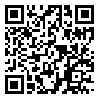Volume 68, Issue 3 (5 2010)
Tehran Univ Med J 2010, 68(3): 153-161 |
Back to browse issues page
Download citation:
BibTeX | RIS | EndNote | Medlars | ProCite | Reference Manager | RefWorks
Send citation to:



BibTeX | RIS | EndNote | Medlars | ProCite | Reference Manager | RefWorks
Send citation to:
M H, K M, A M, A B. An optimized mixture of kiwifruit actinidin and trypsin for isolation and culture of endothelial cells from rat aorta. Tehran Univ Med J 2010; 68 (3) :153-161
URL: http://tumj.tums.ac.ir/article-1-359-en.html
URL: http://tumj.tums.ac.ir/article-1-359-en.html
1- , amostafaie@kums.ac.ir
Abstract: (5765 Views)
Background: Proteolytic enzymes, especially collagenases, are used for digestion of
extracellular matrix, cell isolation and primary culture. Because of the problems in purification and low amount of collagenases in bacterial or animal sources, it is important to find new sources of the enzymes. So, in the present study actinidin, a plentiful protein in kiwifruit was purified and a mixture of actinidin and trypsin was applied to isolate rat aortic endothelial cells.
Methods: Aortic endothelial cells were isolated using digestion solution containing different concentrations of actinidin (from 2 to 16 mg/ml) and trypsin (0.3, 0.6, 1.2 and 2.4 mg/ml) in different times (from 15 to 90 minute). Isolated cells were cultured in
DMEM culture medium. Isolated cells were identified by morphological characteristics and immunocytochemical staining viability of separated cells was estimated by trypan blue exclusion test.
Results: Actinidin in concentration of 10 mg/ml with trypsin in concentration of 1.2 mg/ml for one hour could isolate rat aortic endothelial cells. In this condition the viability of cells was estimated 90%. Morphological and immunocytochemical charac- teristics confirmed the isolated cells as endothelial cells.
Conclusion: The results showed that the mentioned mixture of actinidin and trypsin has not considerable toxic effects on separated cells and is a novel and suitable option for isolation of rat aortic endothelial cells
Send email to the article author
| Rights and permissions | |
 |
This work is licensed under a Creative Commons Attribution-NonCommercial 4.0 International License. |





